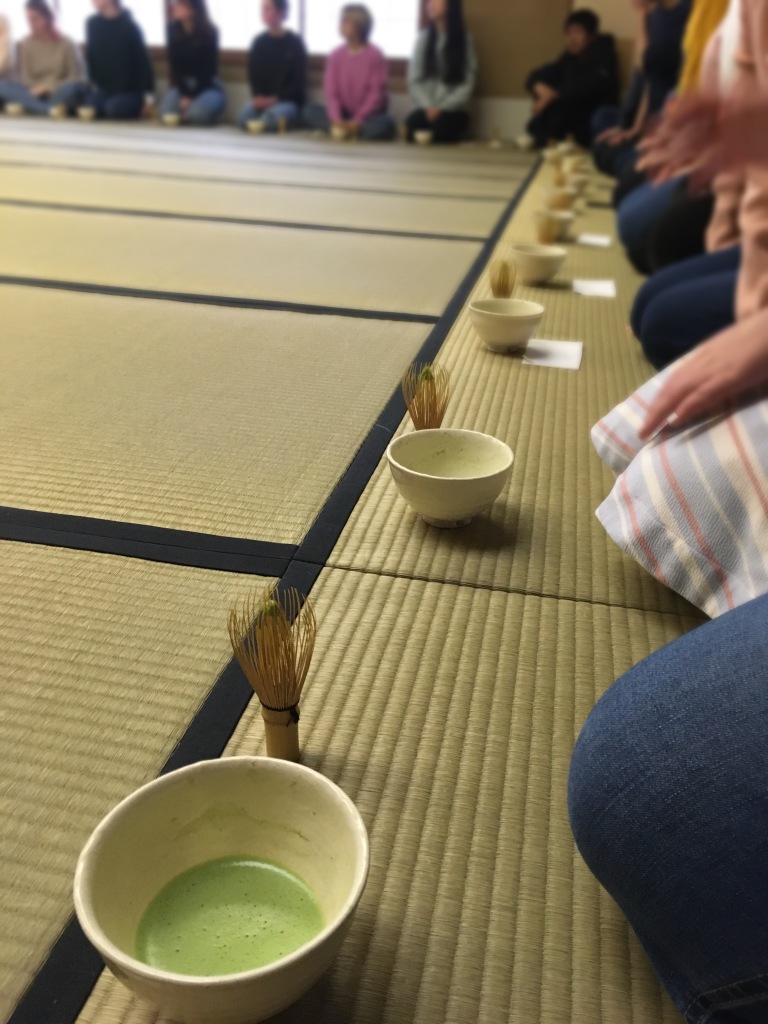Hi, this is Shannon from the ANU and I’m writing another post about the PRIMO exchange program at Ritsumeikan University, Kyoto, Japan. I’m currently in my fourth week of the Ritsumeikan Winter Japanese Program (RWJP), a five-week intensive language course, and I’m going to give a quick run-down of what prospective students could expect during the program.
First of all, the language study is supplemented by frequent cultural excursions and activities around Kyoto, so it’s not all study, study, study! The first week of the program had these field trips every afternoon, which then settled into a regular schedule of Monday, Wednesday and Friday each week. They weren’t just throwaway activities, either – the outings were informative about Japanese culture, often to exclusive cultural institutions that aren’t normally open to the public, and always fun! There have been lots of Japanese traditional crafts to try such as Kiyomizudera pottery, fan dyeing, and calligraphy, instructed by authentic and skilled artists.

As well as crafts, the group has gone on outings to Kinkakuji Temple (also known as the Golden Pavilion), Urasenke Estate where we learned about and experienced Chado (the ‘way of tea’), and a kimono experience where everyone received their own bespoke yukata to take home – after instruction on how to wear and a photo session, of course! The class even had the opportunity to meet a geiko, maiko and jitaka from Kamishichiken. It’s very rare for even Kyoto-ites to be able to meet these professionally trained Japanese performers and entertainers. They performed for us – instantly enthralling the entire room of people with their music and graceful dance – and we were even able to play traditional games with them. As you can see, Ritsumeikan University spared no expense or effort in arranging these invaluable and exclusive cultural activities.
As for the language study component of the course, every day we have classes from 9am to 12pm. Three hour blocks might seem daunting, but don’t worry! There are 10 minute breaks every hour on the hour to refresh your brain, have a chat, or duck downstairs to grab a hot bottle of coffee from the ubiquitous Japanese vending machines. I was placed into the highest level class out of four, according to my application to the program plus a short confirmatory placement test on the first day. However, there were all levels of Japanese ability spread between four classes, from absolute beginners on up, so the RWJP program suits a wide range of people.

In classes we usually start out by talking and listening in Japanese – about what we did on our weekends off, topics the teacher was thinking of that day, events in the news. The first couple of days were a little tough getting used to, but you’ll adapt a lot quicker than you might think and soon be advancing your language ability quite quickly. We also received textbooks and would typically go through one chapter a week, with two sheets of homework consisting of words to memorise and sample sentences to write using certain grammar points. On top of this, there are quizzes once a week (from the second week on), an 8 minute presentation, and a final exam. As a tip, the homework isn’t onerous but it does tend to pile up quite quickly if you’re not careful. My advice would be to do your homework as soon as you receive it!

One of other great aspects of studying at Ritsumeikan University was the ‘buddies’. Referred to universally as ‘buddy-san’s, these were many and varied student volunteers who showed us around campus, came with us on field trips, had lunch with us, and are just basically wonderful people. They happily provide lots of opportunities for conversations in Japanese, no matter what your language level. The presence and assistance of the buddy-sans really made me feel welcome and grounded from the very first day and I’m grateful for them!
